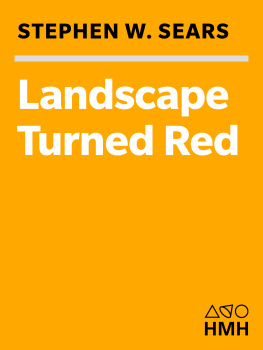Stephen F. Mills, 1997
First published in 2000 by Fitzroy Derborn Publishers
This edition published 2013 by Routledge
2 Park Square, Milton Park, Abingdon, Oxon OX14 4RN
711 Third Avenue, New York, NY 10017
Routledge is an imprint of the Taylor & Francis Group, an informa business
Typeset in Monotype Fournier by
Carnegie Publishing, Lancaster, and
A Cataloging-in-Publication
record for this book is available
from the Library of Congress
ISBN 1-57958-229-x Fitzroy Dearborn
All rights reserved, including the right of reproduction in whole or in part in any form
Introduction:
America the Place
The United States of America is a major national security state, an economic giant and, with the demise of the Soviet Union, the sole surviving world power. For many people across the world, the USA is primarily that mix of hard work and quick money, the American Dream, so exalted on movie screens and television. As such, the USA has long been a major destination for both the upwardly mobile and the dispossessed of many nations. For those interested in studying the USA, initial focus usually plays upon the political system, that mix of the Old and New World precedents, within which society orders and manipulates its tensions. Given its economic wealth, however, it is hardly surprising that, for many, the distinguishing feature of the USA is not so much its political system, however fascinating are its election campaigns and its Watergate to Whitewater exposs, but its prodigious economic wealth and, hence, its impact upon world trade. A vast continental economy has emerged from a series of small British trading colonies to become an essential pivot within the modern world order. And it has been this growing reputation for economic wealth, once based in agriculture, then in industry, now in information, that has continued to induce so many people to make new lives here. America is its people, a vast human kaleidoscope where once there were only indigenous peoples. But America is more than a melting-pot: bundle all its various dimensions together and what emerges is America the place, a particular mixture of past and present, of peoples and their activities, that distinguishes the USA from all other countries.
A sense of place is, perhaps, the ultimate synthesis, the bringing together of all dimensions of environment, perception and experience into a vast whole. But to treat a sense of place as some ultimate interweaving of everything of significance within a particular country or region is to invite an unrealistic expectation. More realistically, notions of place can be used to focus upon specific aspects of the US experience. A concern for place recognises that many of the great processes of political, social and economic life have left their mark upon the face of America its landscape. One of America's distinguishing characteristics, therefore, is that it actually looks different from other countries. The peculiar mix of peoples that is America, that pragmatic mix of free enterprise and regulation that is the US economy, along with the organisation of the tensions between these various elements that is the American political system, all leave their mark upon America as a place. As places emerge, change, and sometimes even die, the landscape is often the only record of what has happened. Traces of past lives can be found embedded in the landscape long after even folk memories have faded away: learn to read the landscape and you too may see traces of people and events for which no other trace may exist. The landscape is a public record of all those forces that helped to fashion it, mould it, and even destroy it. The landscape is a memorial to America, but often an unintended one. Some areas have been deliberately sculpted to commemorate specific people or events, such as the Mall in Washington DC, with its array of presidential and military memorials, or the recreated Jamestown Settlement, to honour and explain the first English settlers of Virginia. Most of America, though, is an unwitting memorial to people and activities otherwise long since forgotten, ordinary life built into everyday surroundings.
This study of the American landscape has been written at a time of growing interest in the environment across a wide range of interests, whether amongst the general public or within academic circles. It seems appropriate, then, to mention one aspect that is crucial to the growing environmental debate: what is landscape? Such a question may initially appear trivial, pedantic, even academic, but far from being a self-evident term, landscape is amazingly problematic. And as Americans come increasingly to debate what should happen to their landscapes, famous and mundane ideas as to what landscape is (and is not) are a crucial influence on public discussion. So this study will raise some general questions about landscape an essential task, given that there are often quite rival notions as to what should be studied. The substantive focus explores the creation, interpretation and representation of US landscapes, looking in particular at the way in which landscape changes illuminate otherwise occluded aspects of the American experience.
What is landscape? This important question has been answered in many radically different, and possibly mutually exclusive, ways. Is it Many protagonists insist on one meaning or the other, but rarely both. The two divergent schools of thought generally reflect two rival academic traditions: that of the environmental sciences, particularly geography, and that of the humanities, particularly art history. Only recently have there been explicit attempts to integrate these once traditional approaches, partly influenced by the recognition that popular views about landscape need to be taken on board, not ignored.
The textbook approach to landscape has traditionally consisted of an examination of environmental changes effected by human activity, starting with those background features of general relief, climate, vegetation and soils that existed prior to any human impact upon plants and animals. Physical geography is followed by the impact made by agriculture, trade and, finally, industry over the ensuing years, leading inevitably to contemporary landscape changes, with their varying cultural, technological and even ideological aspects.
Part of this confusion within landscape's pedigree emerged from the diffusion of Romantic indeed, Transcendentalist notions of communing with nature. In the face of relentless modernity, spiritual renewal was supposedly most likely where the human impress was least evident. In the last century, the power that the new sciences had over people's imagination encouraged a reaction that valued the wild for seeming so untamed. With the growth of scientific environmentalist perspectives, many came to see variety in the landscape as the product of purely natural forces, whether relict features from the geological past, the product of current climatic and weathering processes, or some combination of these. In a continent where people can seem so irrelevant beneath a prairie sky, puny within an Arctic storm, or helpless in a desert drought, it was hardly surprising that landscape variety was explained in primarily physical terms: geology plus climate equals vegetation within the constraints of altitude. With vegetation as a convenient surrogate for these complex interacting variables, the study of landscape variation became little more than an exercise in biogeography. Few residents of New York City realise how human activity has shaped the landscapes of the nearby Catskill Mountains. Where regrowth soon covered once barren mountains, there was a temptation to see all such desolate and wild areas as virgin lands, despite the role of hunting and logging prior to tourism, never mind the earlier impact of fire in the hands of the native peoples.










